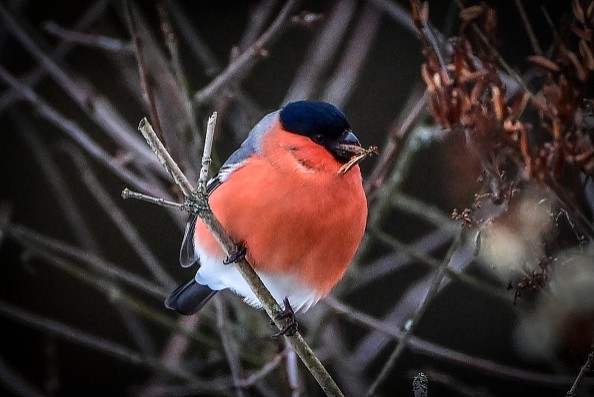Potterheads are enthralled with a bird performing the Harry Potter theme tune. Zephyr, a bird who can not only croon but also beatbox, recently became famous on TikTok after flawlessly singing the Harry Potter theme tune.
Humming to Harry Potter
Although the first Harry Potter film was almost 20 years ago, fans' love for all things, Hogwarts is still at an all-time high. A bird humming the movie's theme tune has enthralled all Potterheads online.
Trending
A European starling is breaking the internet with its musical prowess in what appears to be a scene right out of any magical film where avians are masters at singing. Zephyr, a bird who can not only croon but also beatbox, recently became famous on TikTok after flawlessly singing the Harry Potter theme tune.
The current video, which has over 20 million views, was posted on the platform by its "bird mom" user @farijuana_, a lady who continues posting numerous footage of the talking bird. "The middle breath," the woman remarked in the video's description, pleased by the bird's antics demonstrating its abilities.
"I adore how he even copies my breath while whistling," the woman remarked on TikTok after posting the now-viral video.
Meanwhile, 'Muggles' on social media was astounded at how effectively the bird captured the theme tune, with others adding that it would be ideal for the Hogwarts environment.
In January, the Harry Potter reunion 'Return to Hogwarts' offered fans a rush of nostalgia. Still, it also transported them back to Hogwarts and the production of the mega-franchise as the main actors sat down for a talk.
Birds Singing

Birds create various noises, including chirps, rattles, whistles, trills, croaks, drumming, etc. However, how can birds produce these sounds? Sounds are divided into two categories: vocal and nonvocal.
Birds generate a broad range of noises, and you don't have to be an expert to notice. These noises are mild and pleasant, such as a newly arriving wood thrush's lovely phrasing in the spring. Like the harsh mechanical imitations of a northern mockingbird on a summer night, other noises can be startling and irritating, at least to non-birders.
Birds Singing
Birds aren't only singing and squawking for our entertainment (or annoyance). Songbirds use their voices to communicate. Songs and calls are the two primary types of their sounds.
The sound of a bird's singing is more harmonious and complex. Only the male sings in most species, and he sings for two reasons: to attract a female and to warn other males to stay off his territory. Birdsong is linked to courting, breeding, and territoriality, which explains why we hear more birds singing in the spring and summer and less in the fall and winter. Some species will sing from a hidden location in the bush, but most male birds prefer to sing from a visible perch. During mating season, some men sing nonstop. The nighttime symphonies of your local mockingbird are mostly due to spring hormones.
A quick chip, whistle, trill, tweet, or chirp is typical of a bird's call. In a practical sense, this is how birds communicate. Throughout the year, males and females, adults and young birds call. Birds use calls to communicate within a flock or family group, warn off predators, advertise food, and several other ways.
Birds Calls
Bird calls are more difficult to learn than songs because they are less melodic, shorter, and less memorable than songs. But, with practice, learning bird cries may considerably improve your field identification abilities, especially in the autumn and winter.
Certain bird species use nonvocal noises to transmit courting and territorial signals. Woodcocks and mourning doves with whistling wings and woodpeckers banging on hollow trees are examples of nonvocal bird noises.
Related Article : Migratory Birds Use Earth's Magnetic Field to Effectively Locate Their Nesting Places
For more animal related news, don't forget to follow Nature World News!
© 2025 NatureWorldNews.com All rights reserved. Do not reproduce without permission.





